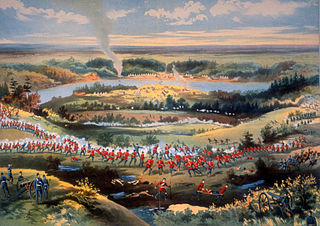
The North-West Rebellion of 1885 was a brief and unsuccessful uprising by the Métis people under Louis Riel and an associated uprising by First Nations Cree and Assiniboine of the District of Saskatchewan against the government of Canada. Many Métis felt Canada was not protecting their rights, their land and their survival as a distinct people. Riel had been invited to lead the movement of protest. He turned it into a military action with a heavily religious tone. This alienated Catholic clergy, whites, most Indigenous tribes and some Métis. But he had the allegiance of a couple hundred armed Métis, a smaller number of other Indigenous warriors and at least one white man at Batoche in May 1885, confronting 900 Canadian militia plus some armed local residents. About 91 people would die in the fighting that occurred that spring, before the rebellion's collapse.

Winnipeg is the capital and largest city of the province of Manitoba in Canada. Centred on the confluence of the Red and Assiniboine rivers, it is near the longitudinal centre of North America, approximately 110 kilometres (70 mi) north of the Canada–United States border.
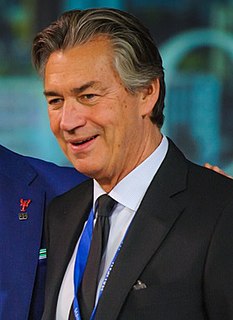
Gary Albert Doer, is a Canadian former politician and diplomat from Winnipeg, Manitoba, Canada. He served as Canada's Ambassador to the United States from October 19, 2009 to March 3, 2016. Doer previously served as the 20th Premier of Manitoba from 1999 to 2009, leading a New Democratic Party government.
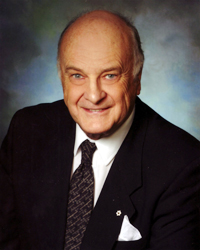
Howard Russell Pawley, was a Canadian politician and professor who was the 18th Premier of Manitoba from 1981 to 1988.

The Manitoba Liberal Party is a political party in Manitoba, Canada. Its roots can be traced to the late nineteenth-century, following the province's creation in 1870.
Hugh Amos Robson was a politician and judge in Manitoba. He briefly served as leader of the Manitoba Liberal Party in the 1920s.
The Communist Party of Canada (Manitoba) is the provincial wing of the Communist Party of Canada for the province of Manitoba. Founded in 1921, it was an illegal organization for several years and its meetings were conducted with great secrecy. Until 1924, the "Workers Party" functioned as its public, legal face. For a period in the 1920s, the party was associated with the Canadian Labour Party. After 1920 it attracted former members of radical and syndicalist groups such as the Industrial Workers of the World (IWW). Many of the new members were Jews, Finns or Ukrainians who supported the Russian Revolution.

Major General Huntly Douglas Brodie Ketchen, CMG was a Canadian soldier and politician. He served in the Legislative Assembly of Manitoba as a Conservative representative from 1932 to 1945. Ketchen was born to a Scottish family living in Sholopore, India. His father, Major James Ketchen, served in the Indian Army. The younger Ketchen was educated at Wellington College and Royal Military College, Sandhurst, England, and came to Canada in 1894, serving for a time with the North-West Mounted Police. In 1905, he married Margaret Elizabeth Robinson. Ketchen served as a lieutenant during the Boer War. He saw active service in World War I, commanding the Sixth Canadian Infantry Brigade in France from 1915 to 1918.
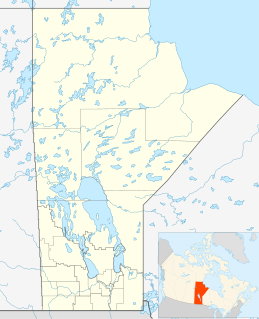
East St. Paul is a rural municipality in Manitoba, Canada. It is located north-east of and adjacent to the city of Winnipeg, and is part of the Winnipeg Metropolitan Area. The municipality was formed on 3 November 1915 when the municipality of St. Paul (1888-1914) was subdivided into West St. Paul and East St. Paul, with the Red River acting as the dividing line. It encompasses 41 square kilometres (16 sq mi).

Hugh Daniel McFadyen is a lawyer and politician in Manitoba, Canada. From 2006 to 2012, he was the leader of the Progressive Conservative Party of Manitoba, and Leader of the Opposition in the Manitoba legislature. Following his party's loss in the 2011 election he announced that he would resign as leader as soon as a new leader is appointed. McFadyen officially resigned on July 30, 2012.

The Winnipeg Police Service is the police force of the city of Winnipeg, Manitoba, Canada.
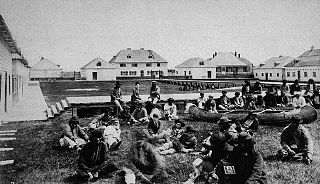
Norway House is a population centre of over 5,000 people some 30 km (19 mi) north of Lake Winnipeg, on the bank of the eastern channel of Nelson River, in the province of Manitoba, Canada. The population centre shares the name Norway House with the northern community of Norway House and Norway House 17, a First Nation reserve of the Norway House Cree Nation. Thus, Norway House has both a Chief and a Mayor.
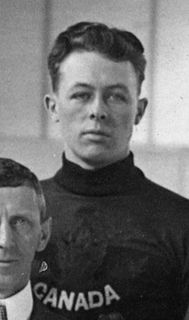
Konrad Jonasson "Konnie" Johannesson was a Canadian aviator and ice hockey player who competed in the 1920 Summer Olympics. As a pioneering aviator, he was instrumental in flight training as well as airport administration.

Sir Joseph Dubuc, was a Canadian lawyer, politician, and judge who was born in Lower Canada and became an important political figure from Manitoba.

Tobias Crawford Norris was a politician in Manitoba, Canada. He served as the tenth Premier of Manitoba from 1915 to 1922. Norris was a member of the Liberal Party.
The Dominion Police Force was the federal police force of Canada between 1868 and 1920, and was one of the predecessors of the Royal Canadian Mounted Police. It was the first federal police force in Canada, formed the year following the Canadian Confederation to enforce federal laws and perform policing duties for the Federal Government of Canada. On 1 February 1920, the Dominion Police was merged with the North-West Mounted Police to form the Royal Canadian Mounted Police as the new federal police force of Canada.
This is a timeline of the history of Winnipeg.
The Saskatchewan Provincial Police was a police force in the Canadian province of Saskatchewan that existed from 1917 until 1928 under the Saskatchewan Provincial Police Act.
Thomas Seller Wallace, MM was a British-born Canadian police officer who was killed in the 1935 Royal Canadian Mounted Police Killings. On 8 October 1935, Wallace was shot in the chest by one of the fugitives in the incident on the outskirts of Banff, Alberta, succumbing to his wounds later that day. He had previously earned a distinguished service record in the British Army during World War I. He emigrated to Canada and joined the Alberta Provincial Police after the war in 1921, before it was amalgamated with the Royal Canadian Mounted Police by 1932 and had been a law enforcement officer in Alberta for 14 years before his death.















